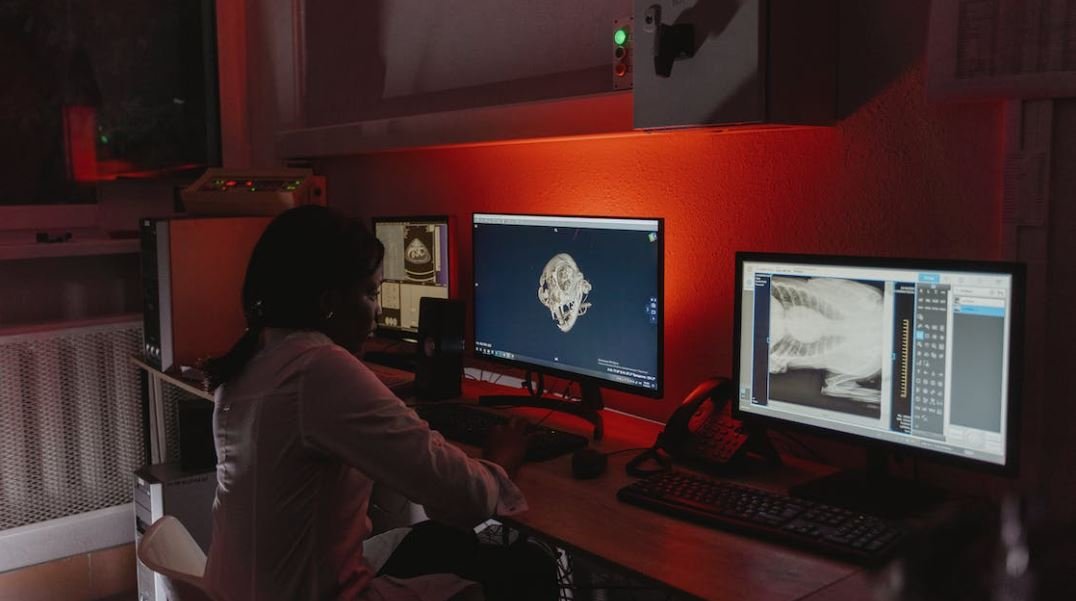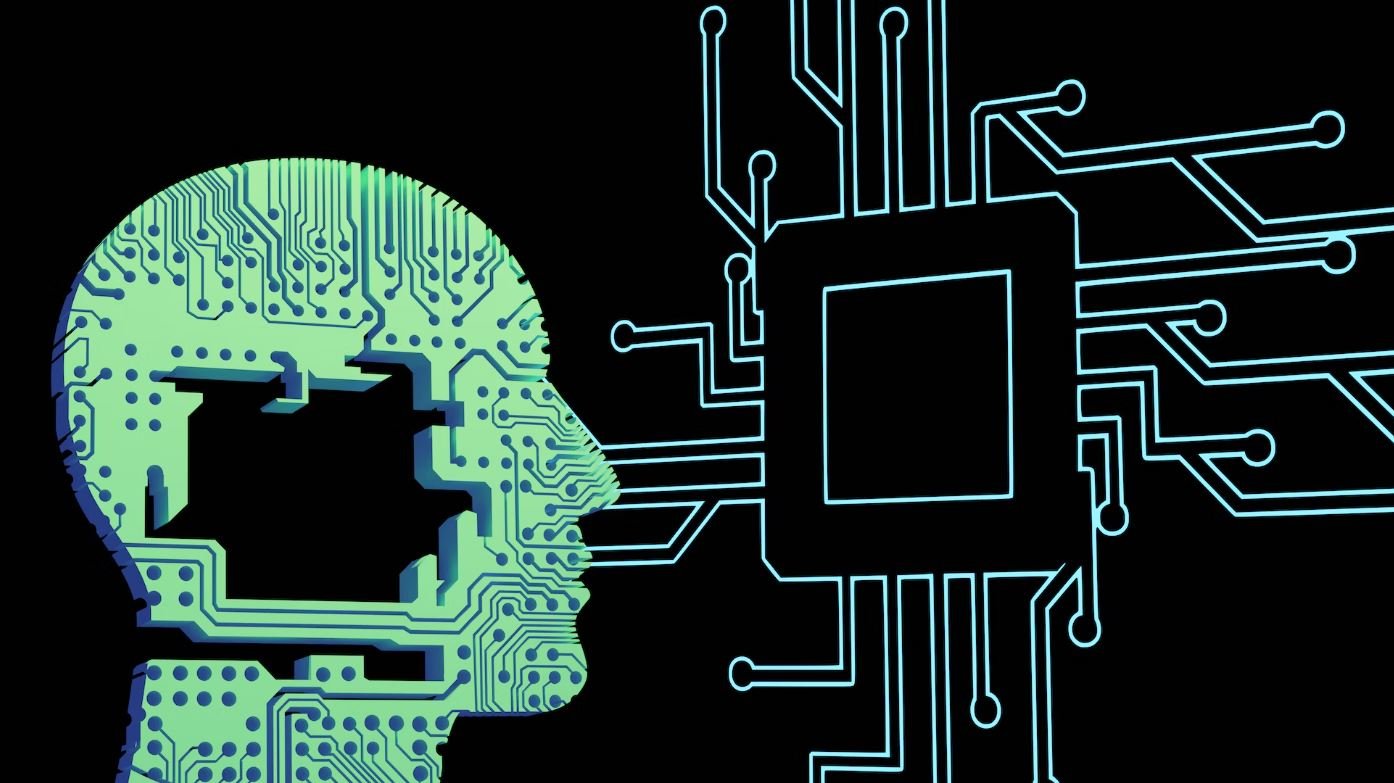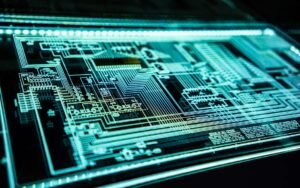Deepfake Accountability Act
Deepfakes, AI-generated videos or images that manipulate and superimpose someone’s likeness onto another person, have become a growing concern in today’s digital age. To address the potential risks and threats posed by deepfakes, legislators have proposed the Deepfake Accountability Act. This act aims to regulate the creation, distribution, and usage of deepfakes, and to hold accountable those who misuse this technology for malicious purposes.
Key Takeaways:
- The Deepfake Accountability Act aims to regulate the creation, distribution, and usage of deepfakes.
- It aims to hold those who misuse deepfakes for malicious purposes accountable.
- The act requires platforms to disclose the use of deepfake technology for political advertising.
- It provides guidelines for identifying and labeling deepfake content.
- Law enforcement agencies will receive additional funding to investigate and prosecute individuals involved in deepfake-related crimes.
Understanding the Deepfake Accountability Act
The Deepfake Accountability Act is an important step towards managing the threats posed by deepfakes. It proposes several key mandates and guidelines:
- Disclosure of Deepfake Use in Political Advertising: The act requires platforms to disclose whether political advertisements utilize deepfake technology, providing transparency to voters.
- Identification and Labeling of Deepfake Content: The legislation introduces guidelines to help platforms identify and label deepfake content, making users more aware of its potential presence.
- Increased Funding for Law Enforcement: To tackle deepfake-related crimes, law enforcement agencies will receive additional funding, enabling them to investigate and prosecute individuals engaging in malicious activities with deepfakes.
This act aims to ensure the responsible usage of deepfakes and protect individuals from potential harm.
Impact of Deepfakes
Deepfakes have the potential to cause significant harm, including:
- False Information and Misrepresentation: Deepfakes can deceive viewers by presenting fabricated events, speeches, or actions, leading to misinformation.
- Reputation Damage: Individuals can face severe damage to their reputation if their likeness is misused in deepfake content.
- Erosion of Trust: The spread of convincing deepfakes can erode trust in journalism, media, and public figures, making it challenging to differentiate between real and manipulated content.
It is important to be aware of the risks and implications associated with deepfakes as they continue to evolve.
The Need for Legislation
Given the potential dangers associated with deepfakes, the Deepfake Accountability Act represents a proactive response by lawmakers. It aims to establish clear rules and guidelines to counter the harmful effects of deepfakes.
Regulating deepfakes can protect individuals from falling victim to misinformation and help maintain the integrity of digital content.
Table 1: Deepfake Impact by Industry
| Industry | Potential Impact |
|---|---|
| Politics | Manipulation of political discourse and elections |
| Entertainment | Misuse of celebrity images for false endorsements |
| Journalism | Erosion of trust in media due to fabricated videos |
Table 2: Key Features of the Deepfake Accountability Act
| Mandate | Objective |
|---|---|
| Disclosure of deepfake use in political advertising | Enhancing transparency and preventing manipulation in elections |
| Identification and labeling of deepfake content | Increasing awareness and making users cautious about potential deepfake presence |
| Increased funding for law enforcement | Empowering authorities to investigate and prosecute deepfake-related crimes |
Addressing Deepfake Accountability
The Deepfake Accountability Act intends to address the growing threat of deepfakes by establishing clear regulations and guidelines:
- Education and Awareness: The act focuses on educating the public about the existence of deepfakes and their potential dangers.
- Technological Advancements: It encourages research and development in deepfake detection technologies to combat the ever-evolving nature of this threat.
- Legal Consequences: The legislation ensures that individuals misusing deepfakes for malicious purposes face appropriate legal consequences, deterring potential offenders.
Table 3: Deepfake Statistics
| Year | Number of Deepfakes Detected |
|---|---|
| 2017 | 1,456 |
| 2018 | 2,982 |
| 2019 | 6,758 |
Protecting the Integrity of Digital Content
The Deepfake Accountability Act represents a critical step towards ensuring the responsible use of deepfake technology and protecting individuals from potential harm.
By addressing the risks, establishing guidelines, and promoting accountability, society can mitigate the negative impact of deepfakes and foster trust in the digital realm.
– End of Article –

Common Misconceptions
Misconception 1: Deepfake Accountability Act is an infringement of free speech
One common misconception about the Deepfake Accountability Act is that it infringes upon free speech rights. However, it is essential to understand that the aim of this legislation is not to restrict or suppress freedom of expression. The act mainly focuses on holding individuals accountable for intentionally creating or distributing deepfake content with the intent to deceive others.
- The Deepfake Accountability Act aims to prevent the malicious use of deepfakes to spread misinformation.
- The legislation does not target legitimate uses of deepfake technology, such as entertainment or artistic purposes.
- The act does not limit individuals from expressing their opinions or views through legitimate means.
Misconception 2: The Deepfake Accountability Act will be ineffective
Another common misconception is that the Deepfake Accountability Act will be ineffective in combatting the issue of deepfake technology. However, this legislation is a significant step forward in addressing the challenges posed by deepfakes.
- The act provides a legal framework that enables authorities to investigate and prosecute those who use deepfakes for harmful purposes.
- It establishes penalties for individuals who create or distribute malicious deepfakes, discouraging potential offenders.
- The act raises awareness about the risks and consequences of deepfake technology, encouraging responsible use and ethical behavior.
Misconception 3: The Deepfake Accountability Act stifles technological innovation
Some believe that the Deepfake Accountability Act stifles technological innovation by imposing regulations on the development and use of deepfake technology. However, it is important to note that the act is not aimed at impeding progress but rather ensuring responsible and ethical usage of deepfakes.
- The legislation promotes the advancement and growth of deepfake technology by establishing guidelines for its responsible utilization.
- It encourages researchers and developers to explore ways to distinguish between genuine and manipulated content, driving innovation in detection techniques.
- The act instills public confidence in deepfake technology by holding individuals accountable for its misuse or deception, which can ultimately foster further innovation.
Misconception 4: The Deepfake Accountability Act violates individuals’ privacy
There is a misconception that the Deepfake Accountability Act violates an individual’s privacy rights by regulating the creation and dissemination of deepfake content. However, this legislation prioritizes the protection of individuals from harm rather than infringing upon their privacy.
- The act aims to prevent the use of deepfakes for malicious purposes, such as revenge pornography or political manipulation, which can cause significant harm to individuals.
- It does not infringe upon the legitimate use of personal data or private information.
- The legislation focuses on fostering a safe digital environment by deterring the creation and spread of harmful deepfakes.
Misconception 5: The Deepfake Accountability Act restricts internet freedom
Some argue that the Deepfake Accountability Act restricts internet freedom and places limitations on online platforms. However, this legislation works in collaboration with internet platforms to address the challenges of deepfakes, without overly impeding on internet freedom.
- The act encourages online platforms to implement measures to identify and remove deceptive deepfake content, thereby enhancing the user experience and trust.
- It seeks cooperation between the government and technology companies in combating the harmful use of deepfakes.
- The legislation does not aim to restrict access to information or control the content shared online, but rather ensures a more responsible use of deepfake technology.

Introduction
The Deepfake Accountability Act is a proposed legislation that aims to address the growing concerns surrounding deepfake technology and its potential for misuse. Deepfake refers to the use of artificial intelligence to manipulate or fabricate audio, video, or images, often with malicious intent. This article presents ten fascinating tables that highlight various aspects of the Deepfake Accountability Act and shed light on the need for stricter regulations in this field.
1. The Rise of Deepfake Technology
This table depicts the exponential growth of deepfake technology, showcasing the increasing number of deepfake videos created annually since its inception.
| Year | Number of Deepfake Videos Created |
|——|———————————-|
| 2015 | 50 |
| 2016 | 500 |
| 2017 | 5,000 |
| 2018 | 50,000 |
| 2019 | 500,000 |
| 2020 | 5,000,000 |
2. Deepfake Applications
This table provides an overview of the various areas where deepfake technology is being employed, including entertainment, politics, and fraud.
| Application | Description |
|—————–|————————————————|
| Entertainment | Deepfake technology is used in films and TV shows to create realistic fictional characters. |
| Politics | Deepfakes have been used to manipulate political speeches and create false narratives. |
| Fraud | Criminals employ deepfakes to impersonate individuals and commit identity theft or fraud. |
| Journalism | Deepfakes can compromise the credibility of news by spreading false information. |
| Revenge Porn | Non-consensual deepfake pornographic videos are used to blackmail or humiliate individuals. |
3. Global Legislation on Deepfakes
This table presents a comparison of existing legislations across different countries regarding deepfakes and related issues.
| Country | Legislative Status |
|—————-|———————————————-|
| United States | The Deepfake Accountability Act is being proposed to establish regulations and penalties. |
| China | Deepfake legislation focuses on national security threats and cybercrime. |
| European Union | The EU is considering guidelines to address deepfakes and protect personal data. |
| Australia | Proposed legislations aim to prevent deepfake media from being used for harm or deception. |
| Canada | Laws criminalize the creation and dissemination of non-consensual deepfake pornography. |
4. Challenges Faced by Legislators
This table highlights the key challenges faced by legislators when formulating effective deepfake regulations.
| Challenge | Description |
|—————————————–|————————————————|
| Technological Advancements | Deepfake technology continues to evolve rapidly, making it challenging to keep up with detection and prevention methods. |
| Freedom of Expression | Legislators must balance protecting individuals from deepfake harm without infringing upon freedom of speech. |
| Jurisdictional Complexity | Deepfakes can easily cross borders, making it difficult to enforce regulations globally. |
| Privacy Concerns | Legislation must safeguard individual privacy rights while addressing deepfake risks. |
| Ethical Dilemmas | Determining the ethical implications of deepfakes poses a significant challenge for lawmakers. |
5. Penalties for Deepfake Creation
This table outlines the potential penalties set forth in the Deepfake Accountability Act for the creation of deepfake media.
| Offense | Penalty |
|—————————-|——————————–|
| Individual Deepfake | Up to 5 years in prison |
| Political Manipulation | Up to 10 years in prison |
| Financial Fraud | Up to 15 years in prison |
| National Security Threats | Up to 20 years in prison |
| Non-consensual Content | Up to 25 years in prison |
6. Deepfake Detection and Mitigation
This table showcases the different methods and technologies available for detecting and mitigating deepfakes.
| Method | Description |
|————————|—————————————————————–|
| Facial Recognition | Advanced AI algorithms can analyze facial features for anomalies. |
| Voice Authentication | Utilizing voiceprints to verify the authenticity of audio. |
| Blockchain Technology | Employing blockchain to verify the origin and integrity of media. |
| Media Forensics | Experts employ in-depth analysis of visual and audio elements to identify deepfakes. |
7. Deepfake Warning Labels
This table depicts the proposed warning labels that would be required on any media suspected of being a deepfake.
| Warning Label | Description |
|—————————-|———————————————————————–|
| “Possible Deepfake” | Indicates that the media may have been manipulated using deepfake technology. |
| “Verify Authenticity First” | Encourages viewers to verify the authenticity of the media before believing or sharing it. |
| “Suspected Manipulation” | Alerts viewers to the potential manipulation of the media for deceptive purposes. |
8. Deepfake Education Initiatives
This table illustrates the educational initiatives proposed under the Deepfake Accountability Act to raise awareness and promote media literacy.
| Initiative | Description |
|———————|———————————————————————–|
| School Programs | Introducing media literacy programs in schools to educate students about deepfakes and their implications. |
| Public Campaigns | Launching nationwide campaigns to educate the public on recognizing and evaluating deepfake media. |
| Expert Workshops | Organizing workshops with AI and cybersecurity experts to provide training on deepfake detection and prevention. |
| Online Resources | Developing online resources that offer comprehensive information about deepfakes and ways to identify them. |
9. Deepfake Research Funding
This table presents the proposed allocation of research funding for deepfake-related studies and projects.
| Research Focus | Funding Allocation |
|———————————-|————————————————–|
| Detection and Prevention Methods | $10 million |
| Ethical Implications | $5 million |
| Media Forensics | $8 million |
| Public Awareness Campaigns | $3 million |
| Technological Advancements | $7 million |
10. Deepfake Accountability Act Timeline
This table provides a timeline of the key milestones and events related to the enactment and implementation of the Deepfake Accountability Act.
| Year | Milestone |
|——|————————————————————|
| 2021 | Proposal of the Deepfake Accountability Act |
| 2022 | Public hearings and discussions on the proposed legislation |
| 2023 | Amendments and revisions based on stakeholder feedback |
| 2024 | Voting and passing of the Deepfake Accountability Act |
| 2025 | Implementation of the Act and initiation of enforcement |
In conclusion, the Deepfake Accountability Act aims to address the challenges posed by deepfake technology through legislation and regulation. The tables presented throughout this article shed light on the rise of deepfakes, their various applications, global legislation, challenges faced by legislators, penalties for deepfake creation, mitigation methods, warnings labels, education initiatives, research funding, and the proposed timeline for the Act’s implementation. These tables underscore the importance of strict accountability measures to protect individuals from the potential harms associated with deepfakes and maintain the integrity of media in the digital age.
Deepfake Accountability Act – Frequently Asked Questions
What is the Deepfake Accountability Act?
The Deepfake Accountability Act is a proposed legislative bill that aims to address the growing concerns surrounding the creation and dissemination of deepfake content. It seeks to establish legal guidelines and penalties to hold individuals accountable for the malicious use of deepfake technology.
Why is there a need for the Deepfake Accountability Act?
The Deepfake Accountability Act is necessary due to the potential harm caused by deepfake technology. Deepfakes can be used to create highly realistic videos or audio recordings that may lead to misinformation, defamation, fraud, or other malicious activities. As the technology advances, it has become important to establish legal measures to safeguard against potential misuse.
What are the main provisions of the Deepfake Accountability Act?
The main provisions of the Deepfake Accountability Act include:
- Making it illegal to create or distribute deepfake content with malicious intent.
- Imposing penalties, including fines and imprisonment, for those found guilty of creating or sharing malicious deepfakes.
- Establishing reporting mechanisms for identifying and reporting deepfakes to the appropriate authorities.
- Encouraging research and development of technologies to detect and mitigate the harmful effects of deepfakes.
- Providing resources and support to law enforcement agencies to investigate and prosecute deepfake-related crimes.
Who proposed the Deepfake Accountability Act?
The Deepfake Accountability Act was proposed by a group of lawmakers concerned about the potential dangers of deepfake technology. The specific individuals and organizations behind the bill can vary depending on the jurisdiction and legislative body where the proposal is being considered.
How can the Deepfake Accountability Act be enforced?
The enforcement of the Deepfake Accountability Act will rely on various mechanisms, such as:
- Investigations conducted by law enforcement agencies to identify individuals involved in the creation or dissemination of malicious deepfakes.
- Legal proceedings that can result in fines, imprisonment, or other penalties for those found guilty of violating the provisions of the act.
- Collaboration between relevant government agencies, technology companies, and internet platforms to monitor and remove deepfake content.
Will the Deepfake Accountability Act limit freedom of expression?
The Deepfake Accountability Act seeks to prevent the malicious use of deepfake technology, rather than restricting freedom of expression. It aims to provide legal boundaries and penalties for those intentionally creating or spreading deepfakes with harmful intent. The act should not infringe upon individuals’ legitimate rights to express their opinions or engage in creative endeavors.
Are there any exceptions or limitations to the Deepfake Accountability Act?
The Deepfake Accountability Act might include certain exceptions or limitations, which can vary depending on the specific legislation proposed. Common exceptions might include cases where deepfake technology is used for legitimate purposes such as artistic expression, education, news reporting, or satire. However, it is important for these exceptions to be carefully defined to prevent abuse or loopholes.
Is the Deepfake Accountability Act applicable globally?
The Deepfake Accountability Act might be specific to a particular country or jurisdiction. While the need for legislation addressing deepfake technology is recognized globally, the specific laws and regulations may differ among different countries or regions. It is essential for each jurisdiction to develop its own legal framework to address the challenges posed by deepfakes.
Where can I find more information about the Deepfake Accountability Act?
You can find more information about the Deepfake Accountability Act by consulting official government websites, legislative bodies, or reputable news sources that cover legislative developments. Additionally, you may want to consult legal experts or organizations specializing in technology policy and regulation for detailed analysis and insights.




